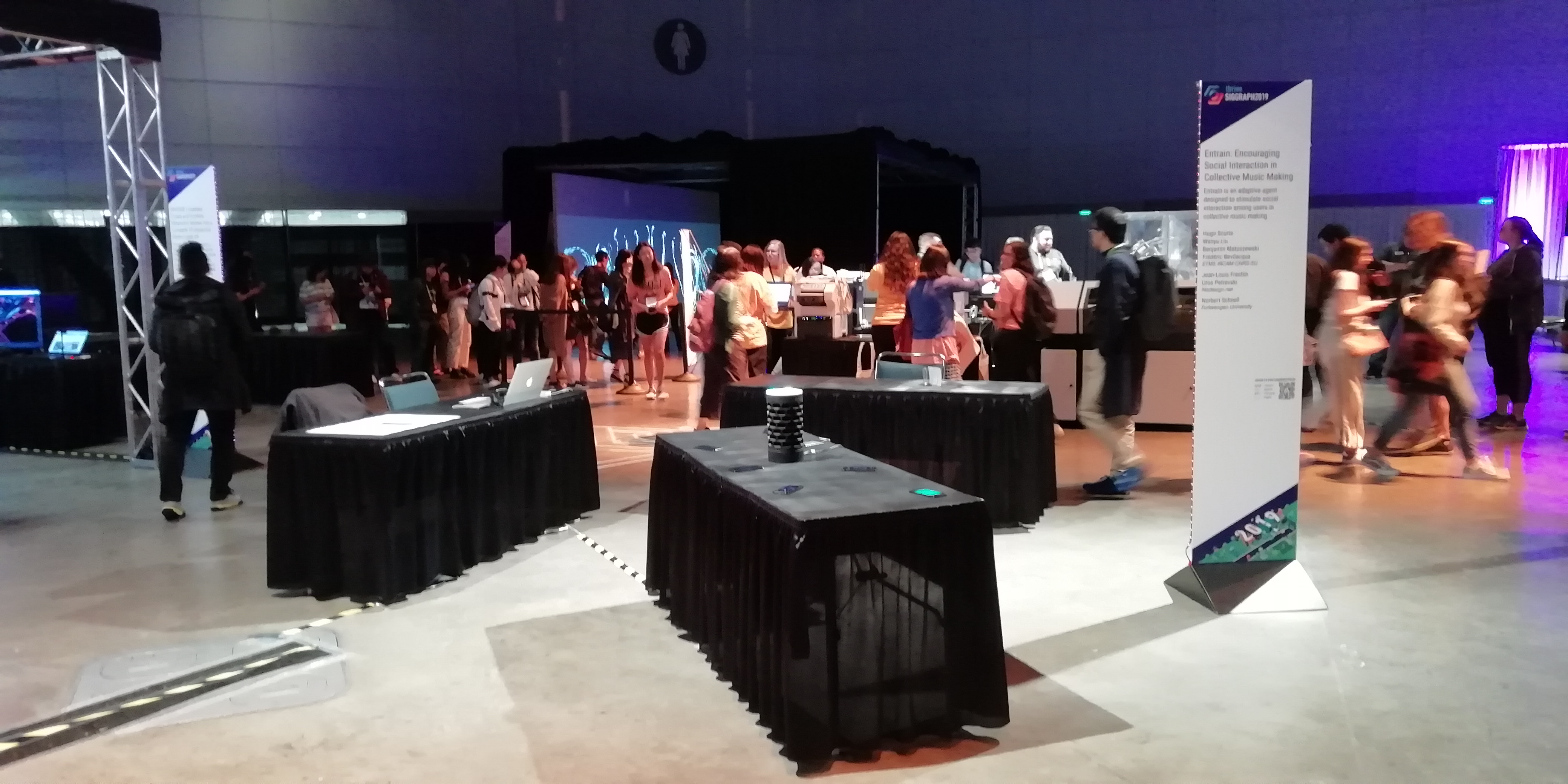Approach
Information theory
Bayesian interaction
Data
Installation
Observation
Qualitative analysis
Period
2019
Entrain
Encouraging Social Interaction in Collective Music Making
Entrain is a shared installation that uses BIG to encourage social interaction in co-located mobile music-making.
Participants fill circular sequences to generate rhythmic loops. Depending on their individual behaviour, the machine may designate specific participants by generating audiovisuals in an adaptive manner. The resulting expressive workflow leverages musical entrainment—or rhythmic synchronization—to stimulate social interaction between humans, as well as with the machine.
Entrain was developed using a participatory design method. We started with an observation step to brainstorm interaction scenarios with stakeholders before deciding on the machine learning technique to be studied. We then implemented a model prototype using BIG, which enabled to steer participants toward new musical configurations, while remaining sufficiently complex to appear as a black-box to them—a feature that was of interest for such a public installation.
Entrain builds on Coloop, an award-winning connected sequencer allowing up to eight mobile users to spontaneously play together by simply accessing a web page. It leverages soundworks, a JavaScript library for collective mobile web interaction, which supports temporal synchronisation of mobile devices. The loudspeaked, designed by Nodesign.net, contains a RaspberryPi responsible for sending information to the loudspeaker and its embedded LEDs.
Entrain is the third example of the framework Bayesian Information Gain (BIG) that I developped during my Ph.D. thesis.



An overview of Entrain is here:
Publication
Hugo Scurto, Wanyu Liu, Benjamin Matuszewski, Frédéric Bevilacqua, Jean-Louis Frechin, Uros Petrevski, and Norbert Schnell. 2019. Entrain: Encouraging Social Interaction in Collective Music Making. In ACM SIGGRAPH 2019 Studio (SIGGRAPH '19). Association for Computing Machinery, New York, NY, USA, Article 5, 1–2. DOI:https://doi.org/10.1145/3306306.3328004